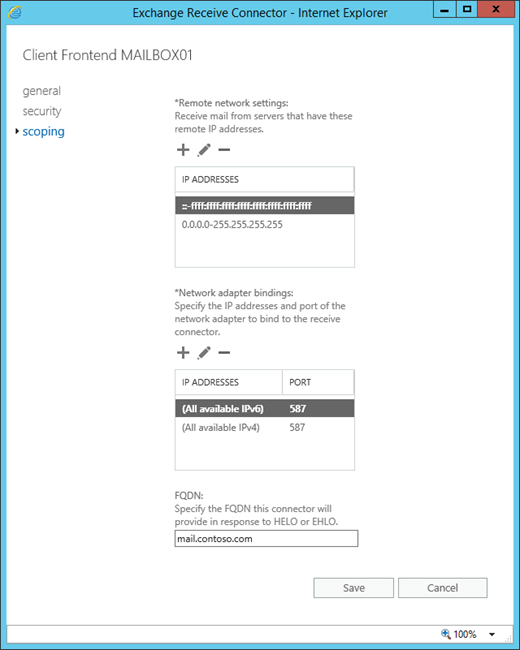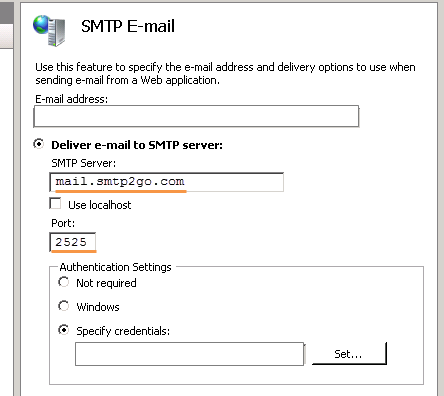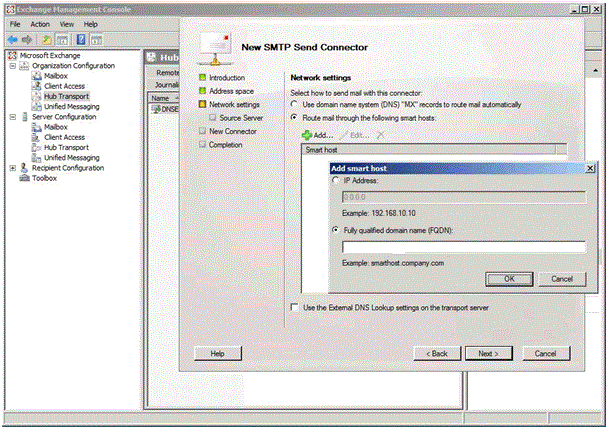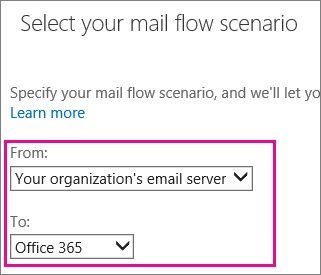Office 365 is the cloud platform of the Microsoft that is now known as the Microsoft 365. It collects all the major services of Microsoft like MS Office, Exchange Online, SharePoint Online, Microsoft Teams, Skype for Business, and large storage space at the OneDrive for Business.
- Microsoft Smtp Server Settings Yahoo
- How To Find Your Smtp Server Address
- How To Setup Microsoft Smtp Server
Businesses enjoy the collaborative features from Microsoft 365 and its online server Exchange Online allows the business to place their business domain in the Microsoft 365 accounts. The user can configure their Microsoft 365 accounts in the Outlook application and access their mailboxes from anywhere.
If you use Windows Mail to send and receive your emails, it’s necessary to configure the right SMTP settings once you start the client.There are loads of common SMTP servers associated to email providers and ISPs: just remember that only a professional SMTP service will guarantee a full deliverability to your messages – an vital issue if you’re creating a newsletter campaign or simply. If you use Windows Mail to send and receive your emails, it’s necessary to configure the right SMTP settings once you start the client.There are loads of common SMTP servers associated to email providers and ISPs: just remember that only a professional SMTP service will guarantee a full deliverability to your messages – an vital issue if you’re creating a newsletter campaign or simply.
During the configuration of the accounts, the users should be aware of the various email communication protocols like SMTP, IMAP, POP, etc. that are important to send/receive emails without any issue.

IMAP (Internet Message Access Protocol)

The IMAP Protocol works at the Application Layer at the Internet connection that allows the client applications to access a remote mail server.
All the incoming email messages are targeted at an email server that saves the messages in the mailboxes. The email client helps the users to access the email with the help of suitable protocols. The majority of the email clients support the IMAP protocol for email saving and retrieval. The major benefit of using the IMAP protocol is that it saves the email message on the server until the user deletes them. Also, a single IMAP mailbox can be accessed at multiple clients whether from professional vendors like Microsoft or free source like Mozilla Thunderbird.
IMAP settings for Microsoft 365
Microsoft Smtp Server Settings Yahoo
- IMAP Server / Incoming Mail: outlook.office365.com
- Port: 993 (default), 143 (default)
- IMAP Account / User: username@domain.onmicrosoft.com or username@your-domain.com
- SSL Mode: Implicit or Explicit (Start TLS)
POP (Post Office Protocol)
Post Office Protocol also works at the application layer at the Internet connection and allows the email server to save the email messages at the email server. The POP protocol works in the Internet Protocol network and helps the users to work on any client application to hold your email mailbox. The user can access the email, download it, and delete the messages from the email server.
POP settings for Microsoft 365
- POP Server / Incoming Mail: outlook.office365.com
- Port: 995 (default), 110 (default)
- POP Account: username@outlook.office365.com or username@your-domain.com
- SSL Mode: Implicit or Explicit (Start TLS)
SMTP (Simple Mail Transfer Protocol)
SMTP protocols are the simple text-based email transfer protocol that connects the email sender and receiver with the help of an ordered data stream channel. The connection between the sender and receiver is the Transmission Control Protocol connection and performs the communication by creating the sessions between the SMTP servers.
SMTP settings for Microsoft 365
- SMTP Server / Outgoing Mail: smtp.office365.com
- Port: 587 (default)
- SMTP Account: username@outlook.office365.com or username@your-domain.com
- SSL Mode: Explicit (Start TLS).
Benefits of IMAP over POP
Because IMAP protocols are supported by the majority of the email clients because it offers more benefits than the other popular protocol like POP.
Support for multiple clients at once.
In the POP connection, there can be only a single client application to access the mailbox. But for an IMAP based connection, there can be multiple email clients for the single user mailbox. When a user accesses the mailbox from a single client, then he/she can detect the changes that occurred from other email clients.
Works in both connected/disconnected modes.
When the user is connected to a POP account, then it connects with the server for only a limited time until the message is not downloaded. But the IMAP connection with the server remains active for as long as the client application is active.
Server searches for messages.
In the IMAP-based connection, the user can perform some searches within the server based on a variety of criteria. The user does not need to download the messages to run some searches.
Multiple mailboxes at the server.
The user can create, rename, delete multiple mailboxes on the server for an IMAP client. The user can also copy the email messages from one mailbox to another. Such flexibility allows the user to create a shared mailbox and public folder etc.
Conclusion
The settings for each of the protocols can function for any Microsoft 365 account. If you want to migrate between the mailboxes to another account or upgrade your mailboxes, then you do not need to configure the accounts manually. But you can use professional software and migrate the entire mailboxes.
Many services and apps require some kind of email server in order to send you email notifications, warnings, errors. Windows Server 2012 doesn`t pack Exchange Server with it, but there is simple solution for sending emails from Windows Server 2012 and here is the tutorial for setting it up.
Prerequisite for this tutorial is installed IIS with IIS 6.0 Management Tools

Search | Server Manager | click on Server Manager
Click on Manage | Add Roles and Features |Next
Role-based of feature-based installation | Next
Select server | Next
Next | (Select Web Server and all under Management tools if you don`t already have IIS installed)
Select SMTP Server under Features
New Window will pop-up |Add Features
Next
Install

Success | Close
Back to search – enter IIS and then click on Internet Information Services (IIS) 6.0 Manager
Expand your local server and right click on SMTP | click on Properties
General tab |IP address – select local machine IP address and enable logging |Apply
Access Tab | click on Connection button
Click on Only the list below |Add
Enter IP of the computer you want to be able to access to SMTP service (you will define all local IPs here that you want to access your SMTP)
Now, back to Access tab | click on Relay button
Same procedure as for Connection |OK |Apply
Delivery tab |click on Advanced button
Under fully-qualified domain name enter name of external mail server. Microsoft office word symbols. If you have the need – you`ll also enter smart host name. After you’re done – OK |Apply |OK
Last stop is the firewall
Enter Firewall in search |select Windows Firewall with Advanced Security
!In some scenarios, you`ll also have to define Outbound Firewall Rule (same procedure as described here for inbound rule)
Right click on Inbound Rules | New Rule
Select Port | Next
TCP | Specific Local ports: enter 25 | Next
How To Find Your Smtp Server Address
Allow the connection | Next
I`ll open my SMTP port to all instances, Public interface is not recommended, so choose wisely and think about what you want to achieve. This is my test lab, so I don`t have any security issues with it and want to test some scenarios. Next
Write the Name and description for your rule | Finish
Rule is created
How To Setup Microsoft Smtp Server
Go to Control Panel | Administrative Tools | Services | find Simple Mail Transfer Protocol (SMTP) and set startup to Automatic (right click on it – Properties – Startup Type – Automatic)
Restart service (or even better – server is you can) and test your SMTP with application or service you want notifications from.
